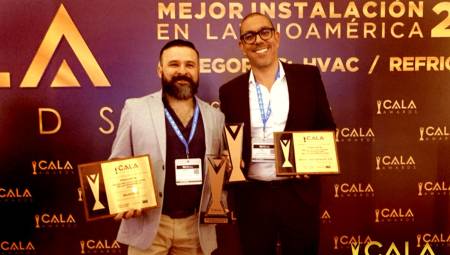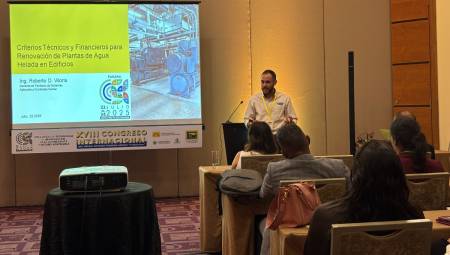 International. The global building sector continues to grow, with an estimated area of 235 billion m² in 2016. The final use of energy by buildings increased from 119 exajoules (EJ) in 2010 to almost 125 EJ in 2016. Fossil fuel use in buildings remained nearly constant from 2010 to about 45 EJ, according to a report by the United Nations Environment Programme.
International. The global building sector continues to grow, with an estimated area of 235 billion m² in 2016. The final use of energy by buildings increased from 119 exajoules (EJ) in 2010 to almost 125 EJ in 2016. Fossil fuel use in buildings remained nearly constant from 2010 to about 45 EJ, according to a report by the United Nations Environment Programme.
On a positive note, annual global building-related carbon emissions appear to have peaked, at least temporarily, at around 9.5 gigatons of CO2 (GtCO2) in 2013, and then declined to 9.0 GtCO2 in 2016. However, that decline was largely due to progress in reducing the carbon intensity of power generation, with direct emissions from buildings stable at around 2.8 Gt of CO2. By contrast, CO2 emissions from building construction grew steadily, from 3.1 GtCO2 in 2010 to around 3.7 GtCO2 in 2016.
The energy intensity of the building sector (in terms of energy use per m2) continues to improve at an average annual rate of around 1.5%. However, the global floor area continues to grow around 2.3% per year, offsetting those energy intensity improvements. Continuing this trend in the coming decades will make it increasingly difficult to achieve ambitions for a world of 2 degrees Celsius (°C) or less.
Global status
The global building sector consumed nearly 125 EJ in 2016, or 30% of total final energy use. Building construction, including the manufacture of building materials such as steel and cement, accounted for an additional 26 EJ (nearly 6%) in estimated global final energy use. Accounting for upstream power generation, buildings accounted for 28% of global energy-related CO2 emissions, with direct emissions in buildings from fossil fuel combustion accounting for about a third of the total. Building construction accounted for another 11% of CO2 emissions from the energy sector.
Globally, the buildings sector is still not reaching its potential. CO2 emissions from buildings and construction increased by almost 1% per year between 2010 and 2016, releasing 76 GtCO2 in cumulative emissions during that period. A growing number of countries have implemented policies to improve the energy performance of buildings. However, a rapidly growing building sector, especially in developing countries, has offset these improvements.
Between 2010 and 2016, population growth, increased land area per person, and increased demand for energy services contributed to a further 57 EJ increase in building energy consumption in 2010. This increase in new energy demand in buildings is equal to all the final energy consumed by Germany during that period.
This 2017 State of the World Report reconfirms the importance of buildings and the construction sector in global energy consumption and related emissions. It also notes that efforts to decarbonise the sector are progressing, thanks to the implementation of comprehensive policy frameworks, the deployment of low-carbon and energy technologies, improved building design approaches and solutions, and an improving investment market. While the pace and scale of improvement are still not sufficient to meet global climate ambitions, there are notable outstanding examples that show that more effort can still be made to achieve those goals, while bringing multiple economic benefits. positive social, environmental and health.
To view the full report you can click here.














